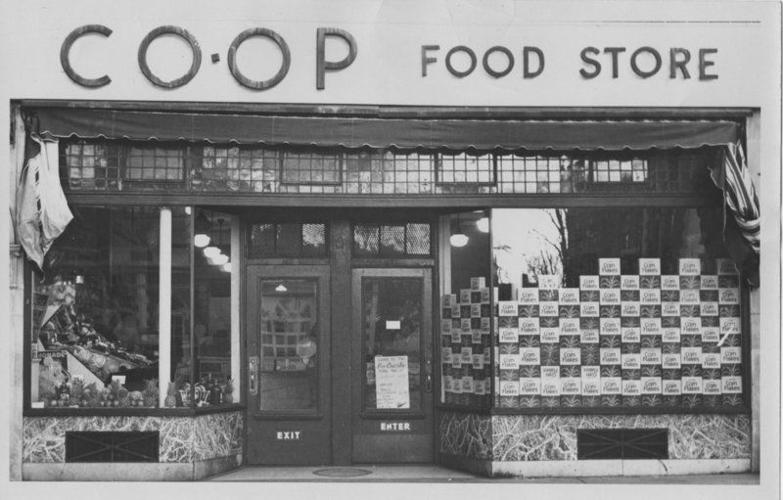Before CVS there was Barcelos; before Barcelos there was a grocery known simply as the Co-Op, Andover’s very visible – and one-time very successful – study in consumer-based business.
The idea sprang from the first cooperative store in Rochdale, England, dictating rules of one vote per person, sales at prevailing market prices, refunds from earnings based on purchases, and open membership based on purchase of stock.
In April 1938, three young men – Russel Dimery, George Kimball and Arthur McLean – established what in today’s practice would be known as a buying club. First housed in the Kimball apartment in North Andover and then the McLean garage in Andover, they were encouraged by Rev. Cornelis Heijn of the North Andover Unitarian Church and the advice of the Eastern Wholesale Cooperative.
By 1938, having acquired 25 members and a manager, a storefront was rented at 197 North Main Street. By 1939, now with 53 members and weekly sales of $185, the club became a legal cooperative organization.
One of its early members was Cornelia Fitts, wife of PA instructor Dudley Fitts and former League of Women Voters president. Mrs. Fitts summarized what drove the business:
“To some, and certainly to the founding members, the Co-Op was a movement, an ideal democracy-in-action…the motives were both idealistic and practical, for they grew out of discussions on social ethics and out of the demand for inexpensive food in the midst of a deep depression.”
Andover’s Co-Op maintained the process whereby each member had one vote regardless of the number of shares he owned (each share in Andover cost $5). At annual meetings, members determined policies and elected a Board of Directors. Patrons were welcome whether or not they were members.
However, members were paid a 5 percent dividend on shares owned. In addition, an annual refund was paid, determined after the payment of taxes and the setting aside of required reserves. The remaining net savings were returned to the members in proportion to their purchases, an average refund equivalent to one week’s groceries free.
In 1941, the Co-Op moved to 3 Barnard St. But success dictated a need for a larger space, and by 1943 the business moved to their final location at 68 Main St., purchasing the building in 1948. Andover also joined with neighboring cooperatives and built a wholesale warehouse in Framingham.
Growth continued exponentially for the next 20 years. The building was enlarged in 1954 and land next door bought for a parking lot in 1959, with yet another expansion in 1960.
By the late 1960s, over 3,000 families were enrolled. Sales, having risen to nearly $1 million in 1958, now approached $2 million. Rebates from profits doubled.
Weekly ads during this period kept alive what was called “do-it-yourself capitalism.” Periodic public meetings were held to explain “The Cooperative Way of Doing Business.”
Leading up to the 1960 expansion that doubled its facilities, one ad noted:
“This big expansion represents more than material progress. It is an act of faith…in our way of doing business and in the growing acceptance of the cooperative idea in this progressive, growing community.”
But all good things must come to an end. By 1975 the Co-Op, facing dwindling interest and increasing overhead, made the difficult decision to sell the business; liquidation was approved in April of that year. But loyal to its members, after expenses and debts were paid, $8.25 was returned for every $5 share.
By May, Lawrence grocery owners Joe, John and Carlos Barcelos negotiated the purchase of the Co-Op with the agreement to maintain the business as an Andover food market. They kept the market going until 1990 when they, too, were faced with selling the business, a business still missed by many even today.
||||

